- Home
- Simon Winchester
The Perfectionists Page 12
The Perfectionists Read online
Page 12
Yet that same imagination could barely conceive of the diverging paths on which America and Britain had now accidentally set themselves. Nor could any see that the British path might well lead into a technological cul-de-sac, while America’s would lead, at least for a while, toward a more open road of development and progress. In 1851 there seemed no stopping the British Isles, and the inventions she had on display were indeed illustrations of what was widely believed to be her unchallengeable power, on the move and for always.
For the benefit of the visitors, the exhibits were arranged in broad classes—Class 1: Mining and Mineral Products; Class 2: Chemical and Pharmaceutical Products; Class 3: Substances Used as Food; Class 4: Vegetable and Animal Substances Used in Manufactures; Class 5: Machines for Direct Use including Carriages, Railway, and Marine Mechanisms; Class 6: Manufacturing Machines and Tools; Class 7: Civil Engineering and Building Contrivances; Class 8: Naval Architecture, Military Engineering, Guns, Weapons, Etc.; Class 9: Agricultural and Horticultural Machines and Implements; and so on—thirty classes in total, all rich in their variety and technological achievement.
To drill down into any one of these and to explore would be to confirm Prince Albert’s view that the mid-nineteenth century was a moment of “wonderful transition.” To drill down particularly into Class 6, Manufacturing Machines and Tools, is to explore, quite literally, that same transition’s cutting edge,* most especially where it related to items that had been made with the utmost care and precision.
Here were the machines of the future, and the mechanicians who would make them. Messrs. Waterlow and Sons, for example, had invented an automatic envelope-making machine, which drew long queues of the curious. People would feed in a sheet of paper that, in a blink of an eye, would be cut, folded, and gummed, ready for its letter and a stamp. A company in Ipswich had come up with a steam-powered excavator for cutting through low hills to allow passage for railway lines—such a monster had never been seen before, nor ever imagined. Another company, based in Oldham in Lancashire, had brought down some fifteen cotton-spinning machines, each one of them, like all the moving devices in Class 6, being sited close to the boilers that had been built in a separate structure outside the Crystal Palace and that piped steam in to make the machinery work.
Robert Hunt, a Victorian science writer who undertook a two-volume, 948-page labor of love, Hunt’s Hand-Book to the Official Catalogues, in which he described and critiqued every last object in the Crystal Palace, was particularly impressed by the Oldham exhibit. The “fingers of the spinners . . . with the aid of that classical instrument the domestic spinning wheel,” he wrote, have at last and for all time been superseded by this machine, which has “several thousand spindles . . . in a single room, revolving with inconceivable rapidity, with no hand to urge their progress or to guide their operations, drawing out, twisting and winding up as many [as a] thousand threads with unfailing precision, indefatigable patience and strength—a scene as magical to the eye that is not familiarized to it, as the effects have been marvellous in augmenting wealth and population.”
ROBERT HUNT DID fret, somewhat. At the close of one particularly lyrical passage about a new power loom, he wrote, “Wonderful mechanical result! What are the moral results?” and repeated his concerns in a similar manner throughout his writings. But few other visitors or critics seemed to share his sentiments, or worried about the social implications. Not in Britain, anyway. The French were perhaps most aware that there might be a downside to all that “unfailing precision”: the ennobled mathematician and politician Charles Dupin warned that “by superseding the labour, the country is depopulated and filled with machines,” and it would be up to the politicians of the future to decide if that was progress. Clearly the good baron thought it was not progress at all—a view shared famously some twenty years later, when his fellow countryman, Gustave Doré, produced his book of engravings of London slum land, which many saw as an indictment of the New World, an amply deserved reminder of the lack of social progress that precision had somehow conspired to create.
The great majority of the thousands who came were happy to see as many examples of steam-powered mechanical perfection as were on offer. To them, the machines were just magical things—the looms, the printing presses, the railway locomotives, the trams, the marine engines (the most impressive of them made by the firm of Maudslay, Sons and Field, which forty years before had designed and created the block-making machinery for the Royal Navy, and was still going strong), and the early and the more refined Watt steam engines themselves. Some other sources of power were on show, waterwheels and windmills most especially, and there were early horse-drawn omnibuses, one with two floors and a spiral staircase mounted aft, an early version of the London double-decker bus. Yet it was steam-powered engines, with their glare of radiant fire, their thunderous sounds, the smell of hot oil, the sheer vision of power they seemed to force on those who gathered awestruck in front of them, that remained most indelibly in the mind’s eye. The audience for them was obliged to stand behind protective railings, for these were dangerous engines, hurling fast-moving, highly polished bars of iron and spinning two-ton gearwheels through space, and capable of easily smashing skulls and catching limbs and sweeping whole children into their maws. These were machines that people would love, but of which they were rightly fearful, and from which they would keep their distance.
Amid all the rousing chaos was a quieter side to Class 6, a display of more static British-made machinery, the long-term importance of which was, if anything, even greater than the mesmerizing whirligigs that drew the largest crowds. And presiding over this quieter byway of the exhibition, at Stall No. 201, was the Manchester based firm founded by the man universally then known, and still today most widely regarded, as perhaps the greatest mechanician in the world, the man who, nine years later, would bite his nails with nerves while watching Queen Victoria fire one of his rifles. “Whitworth, J & Co,” the catalog reads. “Self-acting lathes, planing, slotting, drilling and boring, screwing, cutting and dividing, punching and shearing machines. Patent knitting machine. Patent screw stocks, with dies and taps. Measuring machine, and standard yard &c.”
A rather unprepossessing description, to be sure. It hardly improved when Joseph Whitworth himself put in an appearance on those days when, from time to time, he came down from Manchester. He was large and bearded and oyster-eyed, rather frightening-looking—he had a face “not unlike that of baboon,” according to Jane Carlyle, the wife of Scottish social commentator Thomas Carlyle—and, besides his fearsome looks, was also known for his irascibility, his unwillingness to suffer fools gladly, his domineering manner, and (on a personal level) his relentless infidelity. But the twenty-three instruments and tools he had on show during those six months in London, though they may have lacked the luster and swash of big steam engines and thousand-spindle looms, provided a road map to what would become engineering’s future (and won their maker more medals than any other of the Crystal Palace exhibitors). Joseph Whitworth was an absolute champion of accuracy, an uncompromising devotee of precision, and the creator of a device, unprecedented at the time, that could truly measure to an unimaginable one-millionth of an inch. Before him there was precision; afterward, there was Whitworth-standard precision, and the Great Exhibition was where he made his reputation for it.
The big-name turn-of-the century engineers all seemed to know one another, to train one another, to be apprenticed to one another. Whitworth was very much part of this picture. His profound interest in mechanical perfection began when he was a very young man—he had been effectively orphaned after his mother died and his father took off to train as a priest—and was apprenticed to Henry Maudslay. It was during his time with Maudslay that Whitworth first became fascinated by the very particular idea of the flatness of surface plates.
As Henry Maudslay had already demonstrated, perfect flatness is a thing of the utmost importance. Its elemental significance is quite simple, is central to what one m
ight call the philosophy of precision. A perfectly flat plate does not derive its perfection from anything else—it isn’t something to be measured in relation to something else. Its dimensions are unimportant. Its shape is of no note. It is either flat or it isn’t. And by being exactly flat, it can give precision to those other things that are measured against it. A ruler, a square, a gauge block—all can be set against a flat plane and declared to be true, or not; precisely made, or not.
So, perhaps not unreasonably for the two men for whom this concept was of such paramountcy, there was a small squabble over who had in fact come up first with the means of achieving it. For a while, the dispute flared. But time has now taken care of the argument. Maudslay is given his due as the originator of the notion, the discoverer of the principle: what Whitworth did was to improve and then expatiate upon this notion and give it teeth, as it were—and by doing so, he immodestly gave the world the impression that at the base of all measurement, the starting point for all that was precise, were the finished metal tools and instruments made by Joseph Whitworth. The truth is, Maudslay made the first great machines, and then Whitworth made the tools and the instruments and took the measurements that made it possible to make the great machines that followed. The perfectly flat plane was one of them, arguably the essential one.
Two later inventions above all else define Whitworth’s legacy. The standardized screw on the one hand, and the measuring machine on the other. Both these creations were linked together, literally and mechanically, and both were connected to the sudden new enthusiasm (around the world, not just in Britain and America) for the newly named science of metrology, the study of accurate measurement. In the years following Whitworth, immense amounts of treasure would be expended all around the world, and still are being spent today, in the pursuit of this new calling, of making officially sure that the measurements of everything around us are all accurate to something, measured to a standard agreed upon by all.
Whitworth’s own measuring device was phenomenal for its time, a small thing of the greatest elegance and beauty. It is the sort of beauteous mechanical creation that even a nonmechanical person would wish to own, to look at fondly, occasionally to touch. It can be seen in the portrait of its maker that hangs in the Whitworth Art Gallery in Manchester. He stands in a formal dress coat, with an expression that somehow combines solemnity, pride, and slight surprise. The fingers of his left hand are brushing the brass adjusting wheel, as if to display it, modestly. Beneath, the painter has captured the gleam of obsidian-smooth iron, the instrument’s heavy base; other brass wheels glint yellow in the gaslight.
The basic principle of his device is disarmingly simple. Most earlier measuring machines used lines, such as are found on a ruler or a straightedge—one compares the length of something by holding it next to the rule and seeing where, according to the lines, it begins and ends. But this technique requires the use of sight to make judgments, and it raises questions. By how much is the end of the item to the left or right of the line? How thick is the line itself? How powerful is the magnifying glass needed to answer these questions? And even if a vernier scale is brought to bear on the problem—Pierre Vernier made this scale in the seventeenth century to allow one to peer between the lines of the main scale, as it were, and to make ever-more-exact decisions—the answer is still subjective, requiring good eyesight and fine judgment.
Standardized screws of differing pitches and thread types, used for fastening, for measuring, and for the advancing and retarding of cutting heads of machine tools.
Photograph courtesy of Christoph Roser at AllAboutLean.com.
Whitworth thought line measurement fraught with problems, as clumsy and liable to error. Instead, he favored what is called end measurement, which relied not on sight, but on the simple feel of the tightening of the measuring instrument against the two flat end surfaces of the item to be measured. The device he created basically employs two plane steel plates that can be moved toward and away from each other by the turning of a long brass screw. Place an item between these surfaces and tighten the planes until they hold the object securely. Then slowly move the planes away from each other until—the crucial moment!—the item is loose enough to fall under gravity. The distance between wherever the planes are then sited is the dimension of the item.
Measuring that dimension then depends on the screw, on the wheel that is used to turn it, and on the application of simple arithmetic. Consider a screw that has twenty threads to the inch and is moved by a wheel that has, say, five hundred divisions marked around its circumference. Turn the wheel once completely around and the screw, and the plane plate attached to it, advances by 1/20 of an inch. Turn the wheel through one of the wheel divisions only, and the screw advances by 1/500 of 1/20—that is, 1/10,000 of an inch.
Such was the principle. Whitworth, using his superb mechanical skills, created in 1859 a micrometer that followed this idea but that allowed for one complete turn of the micrometer wheel to advance the screw not by 1/20 of an inch, but by 1/4,000 of an inch, a truly tiny amount. Whitworth then incised 250 divisions on the turning wheel’s circumference, which meant that the operator of the machine, by turning the wheel by just one division, could advance or retard the screw and its attached plane plate by 1/250 of 1/4,000 of an inch. In other words, by 1/1,000,000 of an inch. And provided the ends of the item being measured are as plane as the plates on the micrometer, opening the gap by that 1/1,000,000 of an inch would make the difference between the item being held firmly, or falling, under the influence of gravity. Thus did Whitworth describe the method, some years later, in a paper entitled simply “Iron,” and published in New York to a fascinated engineering readership.
The revelation, and the beautiful little machine that could perform the task so sweetly, astounded the engineering world. Less than eighty years before this, John Wilkinson had given birth to the concept of precision with a machine that could bore a hole to a tolerance of one-tenth of an inch. Now metal pieces could be made and measured to a tolerance of one-millionth of an inch. The rate of change was quite incredible. The possibilities, even if their specifics went then unrecognized, seemed suddenly to be without limit.
All this work was performed in England, most of it in Manchester. Once American machine toolmakers had absorbed all Whitworth’s ideas and principles and standards, it seemed probable—and Whitworth, who had been on a fact-finding mission to New York in 1853, was only too well aware of this—that the engineers of the United States would eventually sweep into pole position and propel their country into world leadership. “The labouring classes [in America] are comparatively few in number,” Whitworth reported on his arrival back home, “but this is counterbalanced by, and indeed, may be regarded as one of the chief causes of, the eagerness with which they call in the aid of machinery in almost every department of industry. Wherever it can be introduced as a substitute for manual labour, it is universally and willingly resorted to . . . It is this condition of the labour market, and this eager resort to machinery wherever it can be applied, to which, under the guidance of superior education and intelligence, the remarkable prosperity of the United States is mainly due.”
And there were the screws—not just the screws that advanced or retarded measuring instruments or microscopes or telescopes, or that elevated naval cannon, but also the screws that held together the parts of all the manufactured goods then made.
Until Whitworth, each screw and nut and bolt was unique to itself, and the chance that any one-tenth-inch screw, say, might fit any randomly chosen one-tenth-inch nut was slender at best. Whitworth championed the idea of standardizing all screws: the threads of all should have the same angle (fifty-five degrees), and a pitch that should likewise be in a fixed relationship to the radius of the screw and the depth of the thread. It took some long while for the individual makers of screws to fall into line, but by midcentury, the standard had been accepted throughout Britain and her empire, and the screw-measuring notation BSW, for “British Standar
d Whitworth,” memorializes him still, as it remains a crucial standard in engineering workshops from Carlisle to Calcutta.
In later years, Whitworth turned his attention somewhat away from the metallic delicacies of high precision and more to the brutish world of weaponry, even though he was vexed that the hexagonally barreled Whitworth rifle that Queen Victoria had fired on that summer Monday in Wimbledon was never accepted for use by the British Army; its .45-caliber size was initially thought too small. He derived some pleasure, though, from hearing that the weapon, branded the Whitworth Sharpshooter in the United States, was much favored by Confederate troops during the American Civil War. (The Union army found his high-velocity guns ideal, but too costly.) His gun was most famously employed with lethal effect at the 1864 Battle of Spottsylvania. The Union general John Sedgwick, seeing the rebel troops in the far-off distance, famously rode in front of his men and loudly declared that “they couldn’t kill an elephant at this distance.” A single shot from a Whitworth gun then promptly rang out and the bullet hit him square in the head, killing him instantly.
Whitworth may have found his excursion into the military world distasteful, but it proved highly profitable. He designed armor plating and exploding artillery shells and came up with a variety of a ductile steel alloy that he deemed wholly suitable for manufacturing guns—and Whitworth steel, as it was called, became popular among weapons foundries in the United States. In his final years, now with a slew of fine houses at his disposal, and schemes for scholarships and endowments that would keep his name and his legacy familiar today, he designed a billiard table for use in his mansion outside Manchester. It was made of solid iron, and though history does not offer details as to Joseph Whitworth’s competence or otherwise at the game, what is recalled is that the surface of the table was renowned for its unique flatness; it was perfectly true. When anyone today bleats about the need for a “level playing field,” it is worth remembering that Joseph Whitworth was in all probability the first engineer to give us one.

 The Surgeon of Crowthorne
The Surgeon of Crowthorne Korea: A Walk Through the Land of Miracles
Korea: A Walk Through the Land of Miracles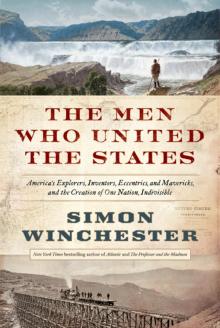 The Men Who United the States: America's Explorers
The Men Who United the States: America's Explorers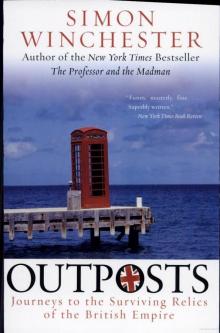 Outposts: Journeys to the Surviving Relics of the British Empire
Outposts: Journeys to the Surviving Relics of the British Empire Atlantic: Great Sea Battles, Heroic Discoveries, Titanic Storms
Atlantic: Great Sea Battles, Heroic Discoveries, Titanic Storms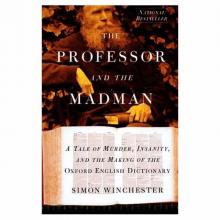 The Professor and the Madman: A Tale of Murder, Insanity
The Professor and the Madman: A Tale of Murder, Insanity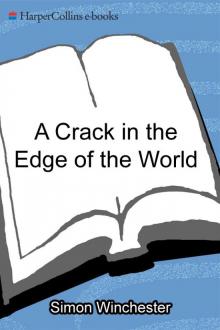 A Crack in the Edge of the World
A Crack in the Edge of the World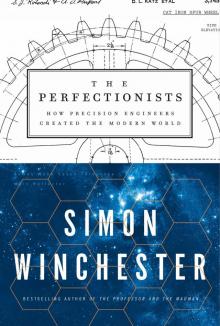 The Perfectionists: How Precision Engineers Created the Modern World
The Perfectionists: How Precision Engineers Created the Modern World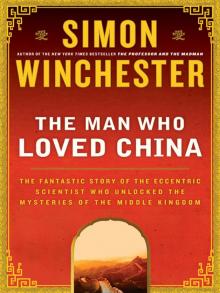 The Man Who Loved China: The Fantastic Story of the Eccentric Scientist
The Man Who Loved China: The Fantastic Story of the Eccentric Scientist The River at the Center of the World: A Journey Up the Yangtze
The River at the Center of the World: A Journey Up the Yangtze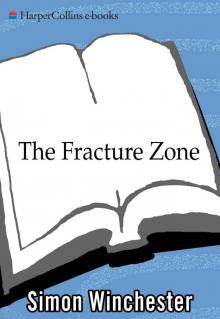 The Fracture Zone: My Return to the Balkans
The Fracture Zone: My Return to the Balkans The Map That Changed the World
The Map That Changed the World Krakatoa: The Day the World Exploded
Krakatoa: The Day the World Exploded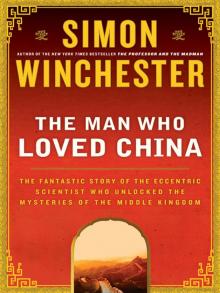 The Man Who Loved China
The Man Who Loved China The River at the Centre of the World
The River at the Centre of the World Bomb, Book and Compass
Bomb, Book and Compass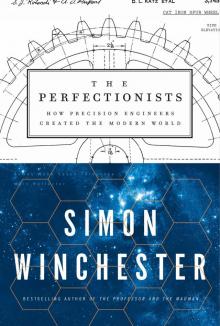 The Perfectionists
The Perfectionists The Meaning of Everything
The Meaning of Everything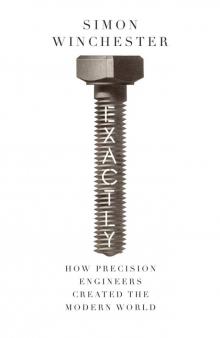 Exactly
Exactly Atlantic
Atlantic Korea
Korea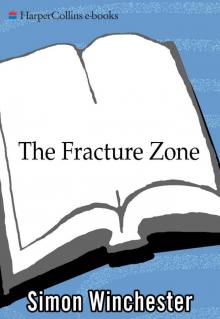 The Fracture Zone
The Fracture Zone Pacific
Pacific Krakatoa
Krakatoa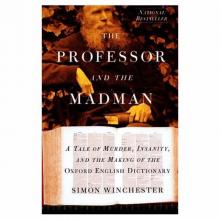 The Professor and the Madman
The Professor and the Madman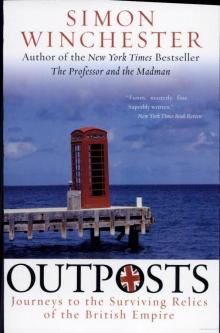 Outposts
Outposts